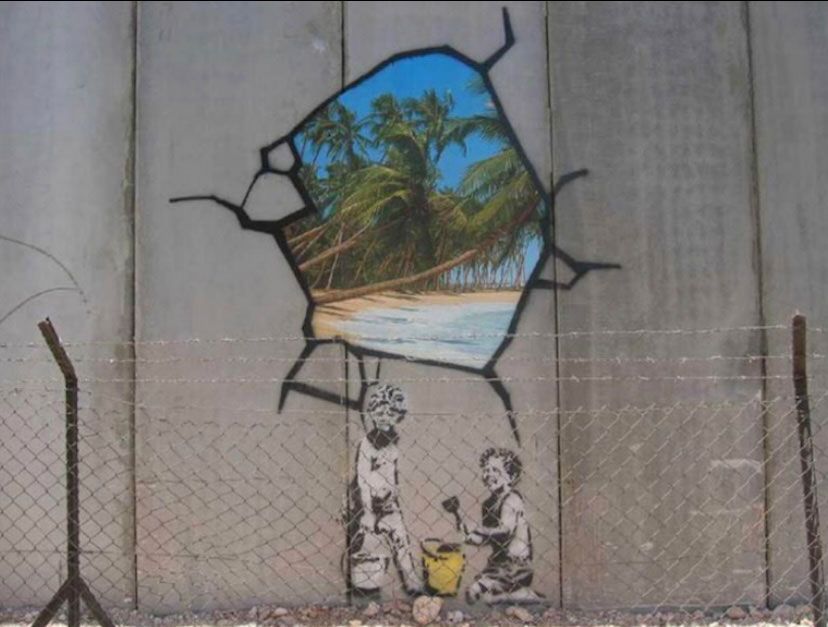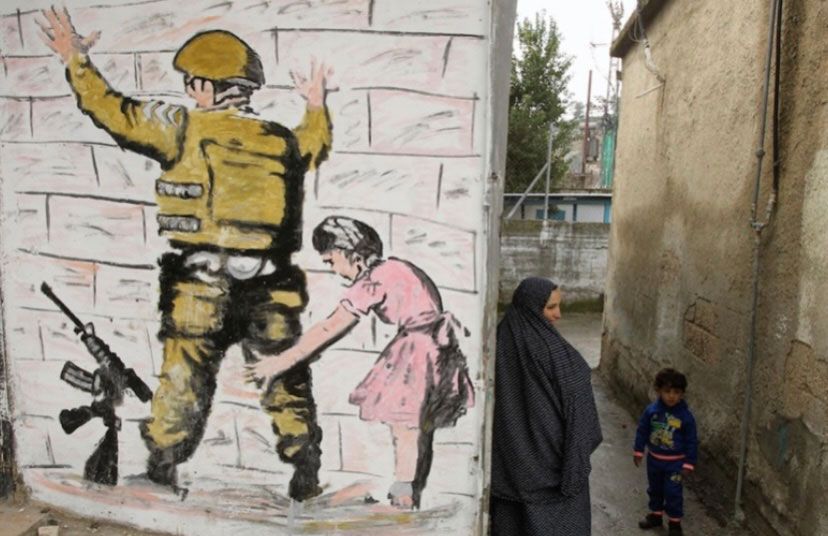It has now been more than thirty years since the emergence of Banksy. He has never failed to preserve his anti-capitalist, anti-systemic and anarchist worldviews and has kept fighting for relevant socio-political issues. Some recent examples are timely ones in 2020, such as the health care staff fighting the COVID-19 pandemic with the nurse he turned into a superhero, and the Black Lives Matter movement revived by George Floyd’s death represented by a black portrait next to a candle burning an American flag.
In fact, not being part of the discriminated group did not stop him from using his wide platform to heighten their voice. “This is a white problem and if white people don’t fix it, someone will have to come upstairs and kick the door in,” he says. These ethics of work not only permit him to defend Black populations without taking the spotlight of their speech, but also offer a role model to people belonging to this “white system.”

Fighting systemic inequalities and humanitarian injustices also pushed Banksy to stay loyal to certain causes including the case of Palestine. He joined a chain of political graffiti artists on the territory by creating images on the West Bank separation barriers. These barriers are considered illegal by the United Nations and constitute a breach of international law since they annex the Palestinian territory according to the International Court of Justice. The images include Palestinian children swinging on an Israeli watchtower in Beit Hanoun, children painting an exit hole on the wall, a girl frisking a soldier and even angels.
Banksy also opened the “walled-off hotel” right behind the separation wall in Bethlehem. People can sleep there where there are also art pieces exhibited by him as well as other artists. He also states it offers “the worst view in the world”. Popular opinion considering this project was polarized. This includes the public as much as the population of the village itself. On one hand, some considered the statement about the view to be inconsiderate of the people living there with it every day. The project was also understood as undermining the cause by making this territory a touristic area with people coming just for the artist’s work without truly acknowledging the constant situation of the population there.

On another hand, this project helped the economy of Bethlehem. It also forces the visitors to face the village’s population’s daily life and struggle, and present an international statement against the state of Israel. These elements are helpful in the progress for Reduced Inequalities, one of the United Nations Sustainable Development Goals. Palestinian people in Bethlehem even displayed his artwork in Manger Square as a thank you.
His work and way of existing in the art scene are still subjects of debate amongst critiques. While his “simple yet profound social critique” is sometimes understood as too obvious and simplistic, it is what makes his art popular and his message accessible. His anonymity, often negatively interpreted too, makes his work not about him but about the targeted population groups which keeps the focus on the cause rather than his personal life.
In a manner of speaking, Banksy became a concept, a way of thinking or even a “postmodernist idea” rather than a person. His work focuses more on the collective than the individual by expressing his engagement, outrage and political ideals. His work can be found while randomly wandering in the streets of England, New York or Palestine and he shares posts almost daily on his Instagram.
